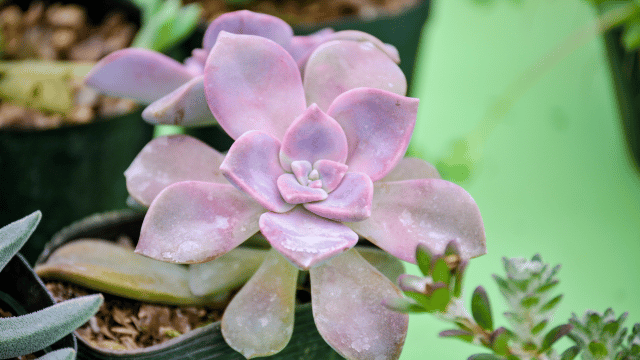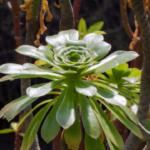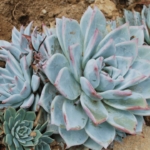Graptopetalum, also known as Leatherpetal, is a genus of captivating succulents native to Mexico and Arizona. These unique plants are prized for their rosette form, fleshy leaves, and star-shaped flowers. With their diverse varieties and relatively easy care requirements, Graptopetalum succulents are a perfect addition to any succulent collection.
In this guide, we’ll delve into the fascinating world of Graptopetalum succulents. We’ll explore:
- Different Graptopetalum varieties and their unique characteristics
- Ideal growing conditions for these succulents
- Essential tips for caring for your Graptopetalum plants
- Propagation methods to expand your Leatherpetal collection
A Diverse Genus the Varieties of Graptopetalum
The genus Graptopetalum encompasses around 19 different species, each with its own captivating characteristics. Here’s a glimpse into some popular varieties:
-
Graptopetalum Paraguayense (Ghost Plant): This popular variety features silvery-green to light gray leaves with a waxy coating, giving it a ghost-like appearance.
- Graptopetalum Amethystinum (Rose Quartz):This succulent boasts beautiful rosettes of lavender-pink to rose-colored leaves, resembling rose quartz gemstones.
-
Graptopetalum Munozii: This unique variety showcases fleshy, triangular leaves with a marbled or patterned appearance in shades of green and cream.
-
Graptopetalum Bellum:This charming succulent is known for its plump, blue-green leaves with a reddish tinge on the edges. It also produces clusters of pink bell-shaped flowers during its blooming season.
These are just a few examples of the diverse and visually intriguing varieties within the Graptopetalum genus.
From Mexico to Your Home Ideal Growing Conditions for Graptopetalum
The natural habitat of Graptopetalum in Mexico and Arizona helps us create optimal growing conditions indoors. Here’s what these succulents prefer to thrive:
- Light: Imagine those sunny Mexican landscapes. Graptopetalum thrives in bright, indirect sunlight. While some direct sun exposure in the morning can be tolerated, avoid harsh afternoon sun that can scorch the leaves. Think about placing your Leatherpetal succulents near a south-facing window for optimal light conditions.
- Temperature: These succulents aren’t fans of extremes. They prefer warm temperatures between 18-24°C (64-75°F). Protect them from frost and cold drafts, as they won’t tolerate freezing temperatures.
- Soil: Well-draining soil is crucial to prevent root rot, which can be fatal for Graptopetalum. Use a succulent or cactus mix specifically formulated for these plants. If you prefer to create your own mix, combine potting soil with perlite or sand for better drainage. Think of mimicking the well-drained, sandy soil conditions of their natural habitat.
- Watering: Remember those hot, dry climates? Graptopetalum succulents are drought-tolerant. Water deeply when the soil is completely dry to the touch, and then allow it to dry out completely before watering again. Overwatering is a major threat to these succulents. Err on the side of underwatering rather than overwatering.
By providing these ideal conditions, you can ensure your Graptopetalum succulents adapt and thrive indoors, bringing a touch of Mexico and Arizona to your home.
Secrets to Success Essential Care Tips for Graptopetalum
With proper care, your Graptopetalum succulents will reward you with vibrant rosettes, healthy growth, and potentially even beautiful blooms. Here are some key tips to remember:
- Repotting: Don’t crowd your Leatherpetal succulents! Repot them only when necessary, such as when the roots outgrow the pot or the soil becomes compacted. Choose a pot with drainage holes slightly larger
Conclusion
Awaiting you is the fascinating world of Graptopetalum succulents! These Leatherpetal succulents are the ideal complement to any succulent collection because of their wide range of varieties—from the graceful Rose Quartz to the ethereal Ghost Plant—and their rather low maintenance needs. You may establish a flourishing indoor environment for your Graptopetalum by learning about their optimal growth circumstances, giving them the care they require, and employing propagation tactics.





